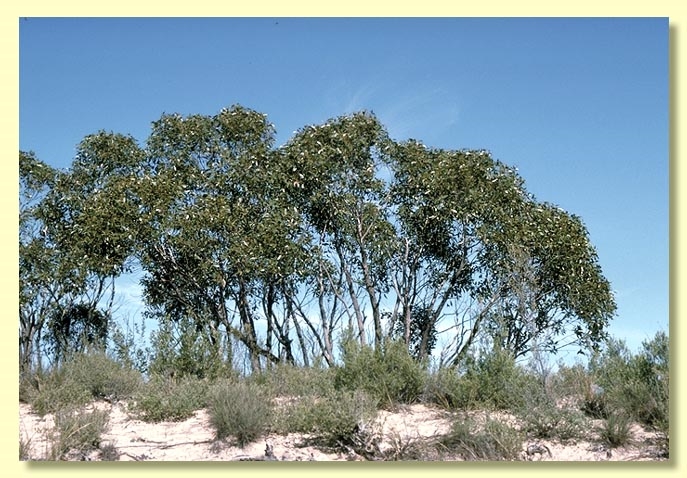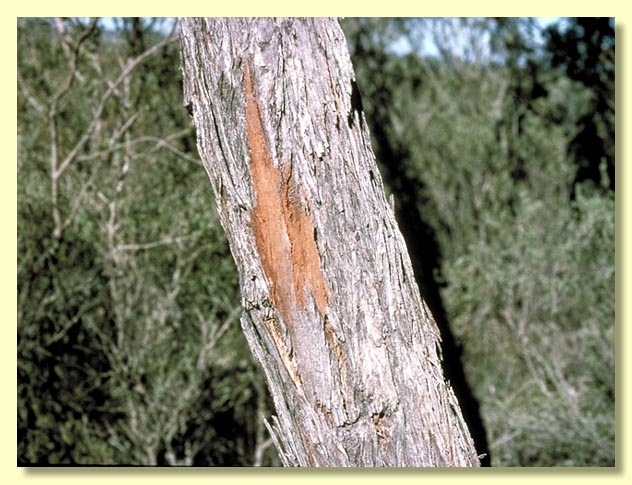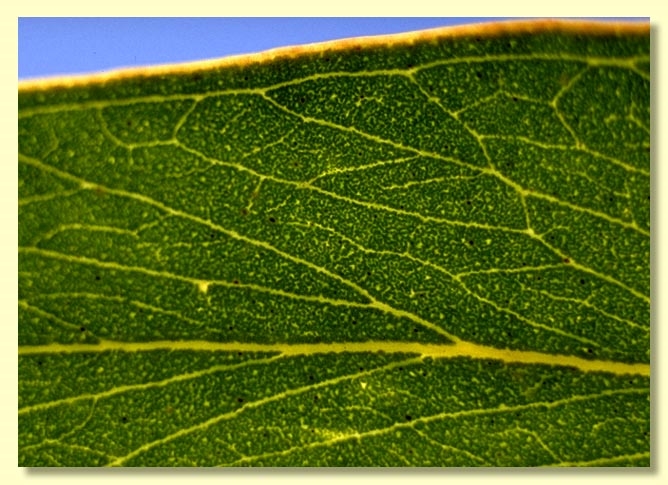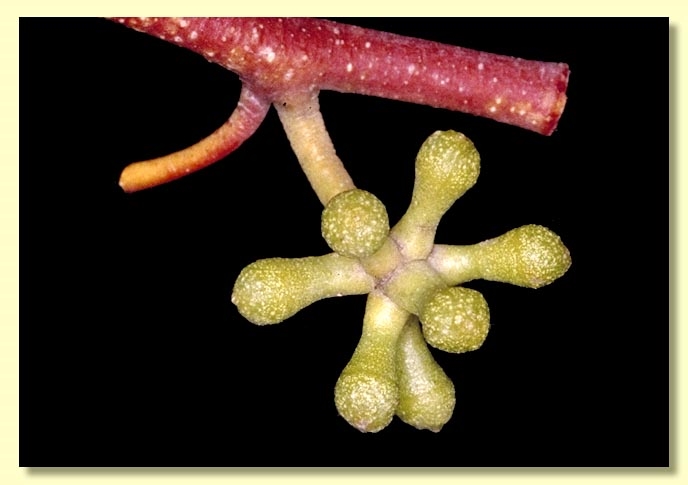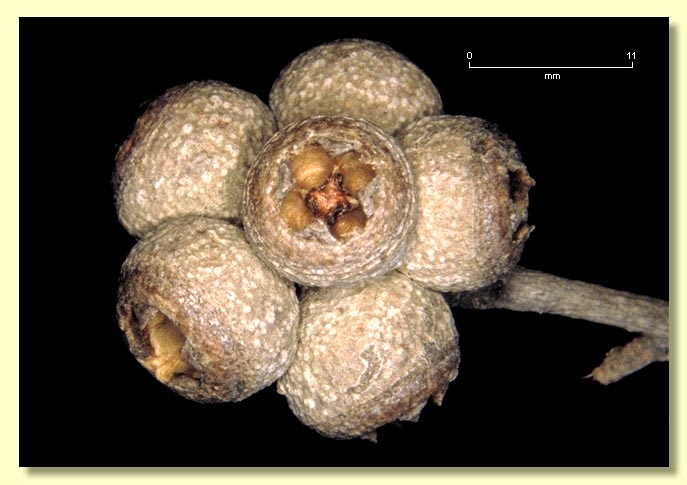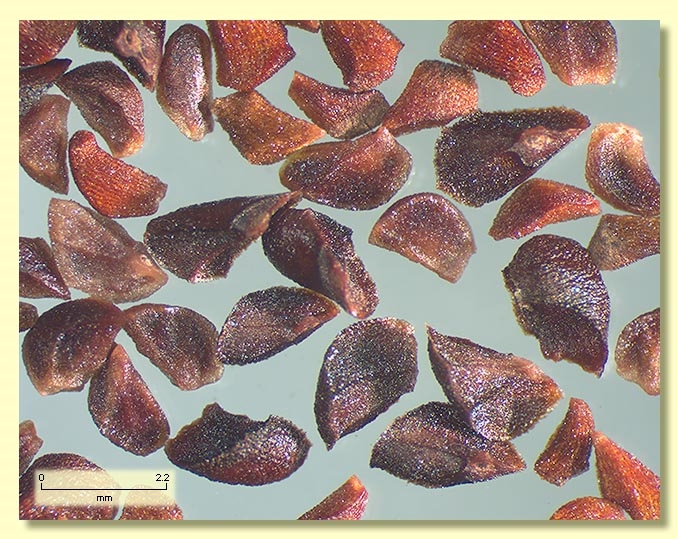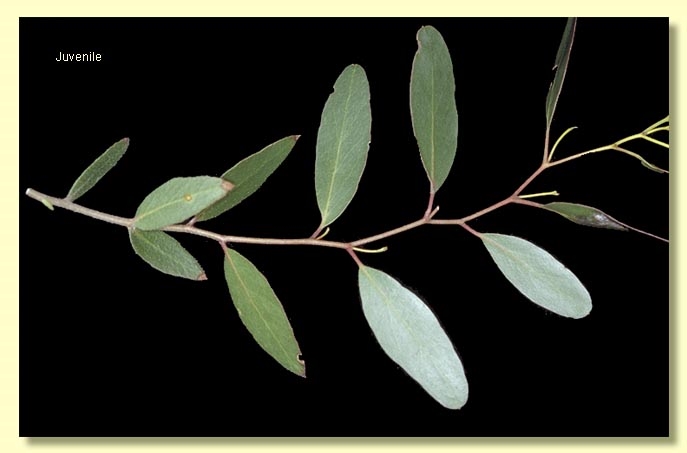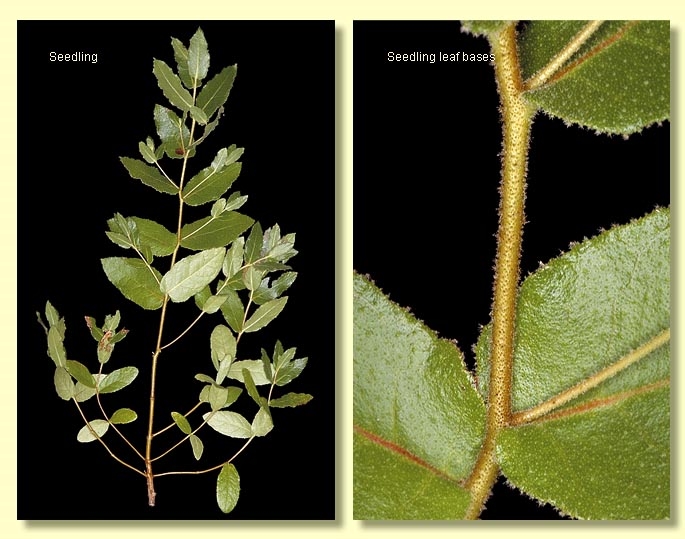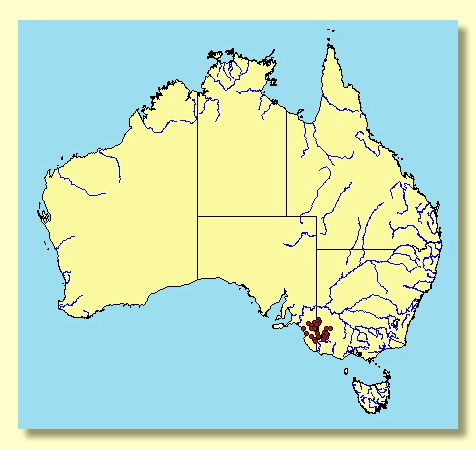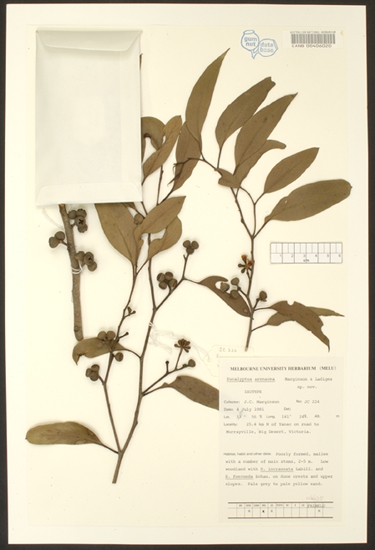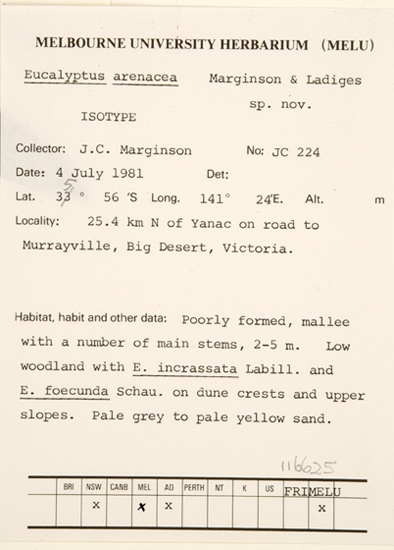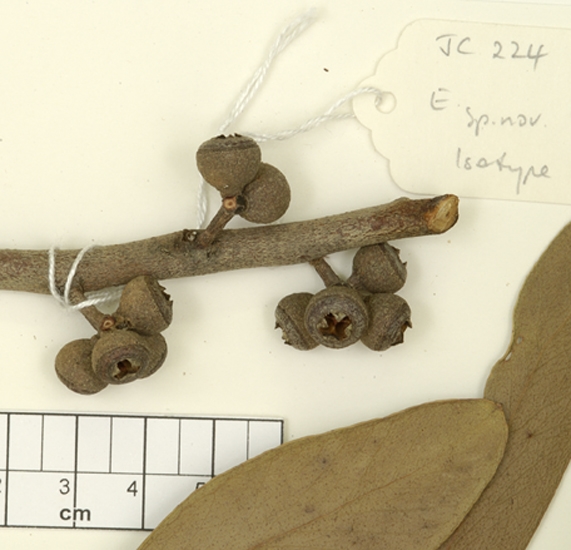Euclid - Online edition
Eucalyptus arenacea
Eucalyptus | Eucalyptus | Capillulus | Pachyphloius
Bark rough to small branches in trees, stringy, grey or brown; in mallees shortly fibrous to flaky on stems with branches smooth.
Juvenile growth (coppice or field seedlings to 50 cm): stem rounded in cross-section, scabrid at first, becoming smooth; juvenile leaves opposite and sessile for a few pairs, scabrid above and below, becoming alternate, petiolate, ovate, 3.5–8.5 cm long, 3–4 cm wide, margin entire, becoming smooth, green and glossy.
Adult leaves alternate, petiole 1–2.5 cm long; blade broadly lanceolate to lanceolate to falcate, 7–12 cm long, 1.5–4 cm wide, base oblique or tapering to petiole, margin entire, concolorous, glossy, green, side-veins at an acute or wider angle to midrib, sparsely reticulate, intramarginal vein parallel to and well removed from margin, oil glands island or obscure.
Inflorescence axillary unbranched, peduncles 0.5–1.8 cm long, buds in umbels of 9 to 15, pedicels 0.2–0.5 cm long. Mature buds clavate to ovoid, 0.5–0.6 cm long, 0.3–0.5 cm wide, green to yellow, smooth (not pronouncedly warty), scar absent, operculum conical to rounded, stamens irregularly flexed, anthers reniform to cordate, versatile, dorsifixed, dehiscing by (usually) confluent slits, style long, locules 3 or 4, the placentae each with 2 vertical ovule rows. Flowers white.
Fruit pedicellate (pedicels to 0.1–0.5 cm), hemispherical or truncate-globose, 0.4–0.9 cm long, 0.7–1.2 cm wide, disc raised or level, valves 3 or 4, slightly exserted or near rim level.
Seeds brown to reddish brown, 1.8–3 mm long, pyramidal or obliquely pyramidal, dorsal surface smooth or very slightly pitted, hilum terminal.
Cultivated seedlings (measured at ca node 10): cotyledons reniform; stems rounded in cross-section, stellate-hairy; leaves sessile for ca 8 to 10 nodes, opposite for ca 5 to 6 nodes then alternate, lower leaves elliptic but by node ca 6 becoming ovate, 3–8.5 cm long, 1.5–4 cm wide, base amplexicaul becoming rounded to tapering at upper nodes, discolorous, bright green above, stellate-hairy.
Flowering has been recorded in January, July and December.
A stringybark species common and often emergent in mallee areas of the upper south-east of South Australia between Kieth and Pinnaroo, and the adjacent Little Desert and Big Desert of western Victoria, with an outlier on and near Mount Stapylton in the northern Grampians. It grows on very poor soils mainly white sands. Occurrence on Kangaroo Island is doubtful and the mallees attributed to E. arenacea may be better classified as E. baxteri. E. arenacea is rough-barked throughout, with concolorous glossy green leaves and truncate-globose fruit to 1.2 cm diameter with a prominent disc.
Eucalyptus arenacea is closely related to E. baxteri in which it was once included. E. arenacea differs from E. baxteri in the lower stature, slender peduncles and pedicels, smooth buds (not warty), and fruit whilst variable in size are usually smaller and often have a flatter disc. Within the natural range and sandy habitat of E. arenacea there are no other stringybark species. In 2012 a new stringybark species very similar to E. arenacea was described from plants in woodlands on shallow soil over sedimentary rock in the "goldfields" area of Victoria, around Maldon, Eucalyptus aurifodina. Like E. arenacea it has slender peduncles and pedicels and non-warty buds but differs most noticeably in the smaller fruit and smaller glossy crown leaves.
MORE ABOUT STRINGYBARKS

